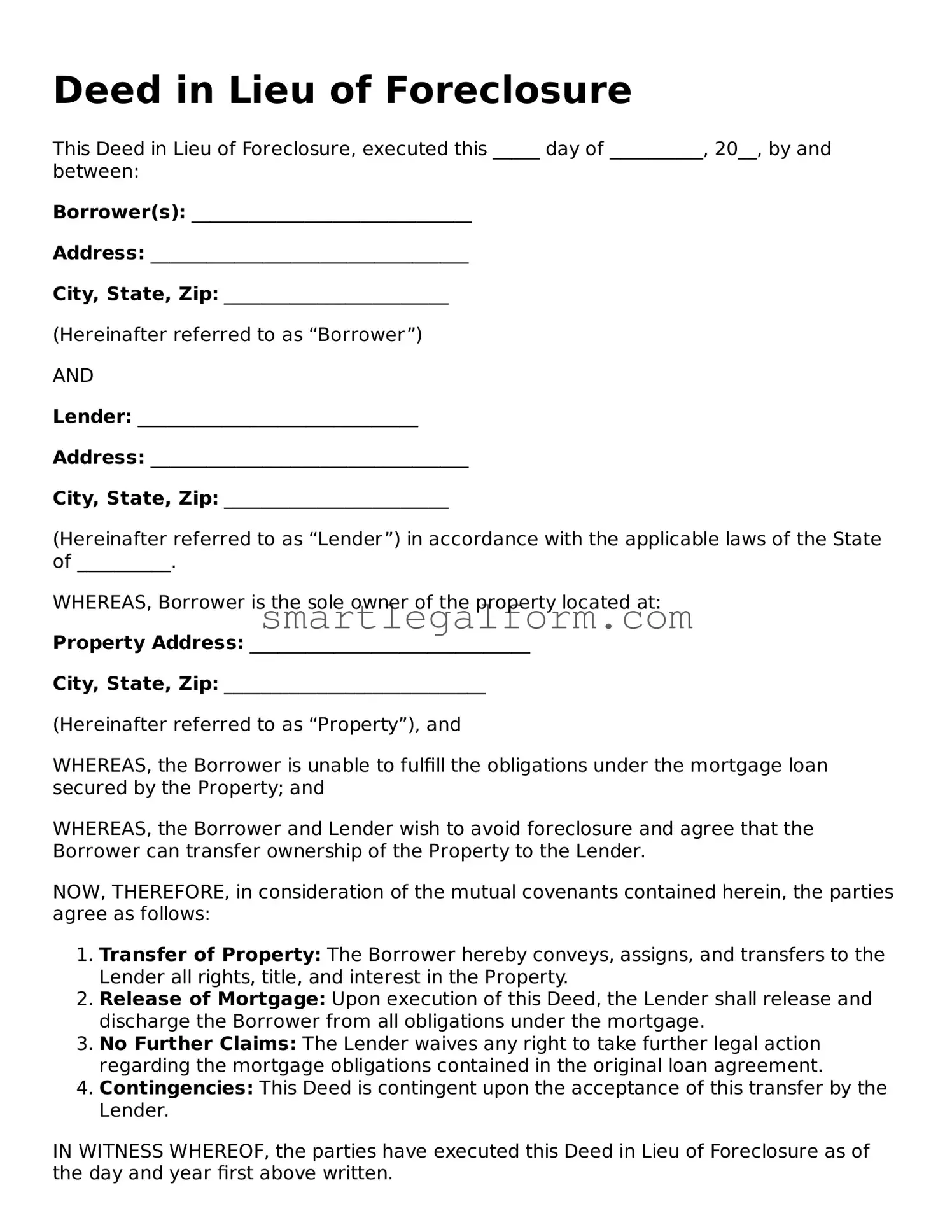Deed in Lieu of Foreclosure
This Deed in Lieu of Foreclosure, executed this _____ day of __________, 20__, by and between:
Borrower(s): ______________________________
Address: __________________________________
City, State, Zip: ________________________
(Hereinafter referred to as “Borrower”)
AND
Lender: ______________________________
Address: __________________________________
City, State, Zip: ________________________
(Hereinafter referred to as “Lender”) in accordance with the applicable laws of the State of __________.
WHEREAS, Borrower is the sole owner of the property located at:
Property Address: ______________________________
City, State, Zip: ____________________________
(Hereinafter referred to as “Property”), and
WHEREAS, the Borrower is unable to fulfill the obligations under the mortgage loan secured by the Property; and
WHEREAS, the Borrower and Lender wish to avoid foreclosure and agree that the Borrower can transfer ownership of the Property to the Lender.
NOW, THEREFORE, in consideration of the mutual covenants contained herein, the parties agree as follows:
- Transfer of Property: The Borrower hereby conveys, assigns, and transfers to the Lender all rights, title, and interest in the Property.
- Release of Mortgage: Upon execution of this Deed, the Lender shall release and discharge the Borrower from all obligations under the mortgage.
- No Further Claims: The Lender waives any right to take further legal action regarding the mortgage obligations contained in the original loan agreement.
- Contingencies: This Deed is contingent upon the acceptance of this transfer by the Lender.
IN WITNESS WHEREOF, the parties have executed this Deed in Lieu of Foreclosure as of the day and year first above written.
Borrower's Signature: ______________________
Date: ______________________________
Lender's Signature: ______________________
Date: ______________________________
STATE OF __________
COUNTY OF __________
SUBSCRIBED AND SWORN to before me this ____ day of __________, 20__.
Notary Public: _________________________
My Commission Expires: _______________
